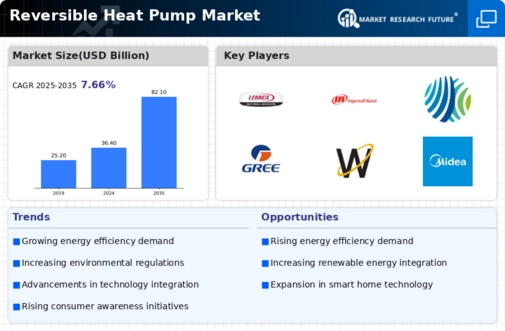Major players in the Reversible Heat Pump Market industry are continuously striving to bring about new developments in the market. Leading Reversible Heat Pump Market players are focusing on expanding their product portfolio by introducing advanced technologies to cater to the evolving needs of consumers. The Reversible Heat Pump Market development is primarily driven by increasing energy efficiency regulations, rising demand for sustainable heating and cooling solutions, and growing awareness about the benefits of reversible heat pumps. The Reversible Heat Pump Market Competitive Landscape is characterized by intense competition among established players and emerging startups.
Key players are adopting various strategies such as mergers and acquisitions, partnerships, and collaborations to gain a competitive edge. They are also investing heavily in research and development to innovate and differentiate their product offerings.
A leading company in the Reversible Heat Pump Market is Daikin Industries, Ltd. The company has a strong global presence and offers a wide range of reversible heat pumps for residential, commercial, and industrial applications. Daikin is known for its innovative technologies, such as the VRV IV system, which provides energy-efficient heating and cooling solutions for large buildings. The company has a strong focus on sustainability and has committed to reducing its carbon footprint through the use of eco-friendly refrigerants and energy-saving technologies.
Daikin's extensive distribution network and customer support services contribute to its strong position in the Reversible Heat Pump Market.
Mitsubishi Electric Corporation is another major player in the Reversible Heat Pump Market. The company offers a comprehensive range of reversible heat pumps for various applications, including single-zone and multi-zone systems. Mitsubishi Electric is known for its advanced inverter technology, which optimizes the performance and efficiency of its heat pumps. The company has a strong presence in both the residential and commercial sectors and is committed to providing innovative and energy-efficient solutions. Mitsubishi Electric's global reach and commitment to customer satisfaction have contributed to its success in the Reversible Heat Pump Market.









